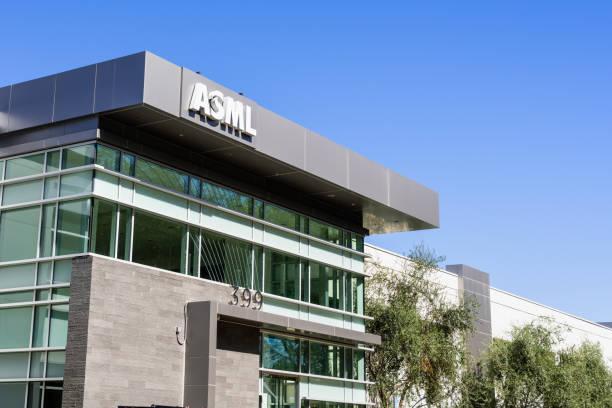Concerns about a global chip glut leading to a slowdown in the sector are well founded. But that’s not the biggest problem facing Dutch semiconductor-equipment maker ASML Holding NV right now.
Revenue for the June quarter of 5.43 billion euros ($5.6 billion) was slightly ahead of estimates, but that was already muted after the company gave a weaker-than-expected outlook three months ago. The real news is that its third-quarter guidance is almost 20% below analyst estimates and it halved the full-year growth outlook to 10% from 20%.
“Some customers are indicating signs of slowing demand in certain consumer-driven market segments, yet we still see strong demand for our systems, driven by global megatrends in automotive, high-performance computing, and green energy transition,” the Veldhoven-based company said in a statement Wednesday.
Chief Executive Officer Peter Wennink put it more succinctly: “We don’t see any demand reduction… we have revenue recognition delayed.”
ASML offers a fast-shipment option for clients. Instead of having the machine fully built and tested at its own factories before being shipped off to the client, formal testing and acceptance is done at the customer site. This gets the equipment up and running quicker, but delays the date at which revenue can be recognized.
The company used this excuse last quarter, too. Shipping faster to satisfy customer needs is a grand gesture, but at some point ASML also needs to take ownership of its own weaknesses in supply-chain management and manufacturing execution. In addition, snarls caused by lockdowns in China and logistics problems resulting from Russia’s invasion of Ukraine have made it harder, and more expensive, to procure the components it needs in a timely manner.
At the same time TSMC, Samsung Electronics Co., Intel Corp. and Texas Instruments Inc. have all announced massive expansion plans in the US — driven and subsidized by government policies that include a $52 billion congressional spending package. These companies will also need semiconductor engineers. And right now, there aren’t enough to go around.
That’s going to mean a shortage of qualified professionals and higher salaries. It takes three to five years to train a semiconductor engineer — though less-skilled factory technicians can be made job-ready much faster. So this shortfall will persist for at least a few years, pushing costs higher and crimping the speed at which companies can expand capacity.
ASML’s halving of its growth projections is being pitched as a temporary disruption based on short-term constraints. That may be true. But cost and supply problems could persist for much longer as the world rushes to compete for the same scarce pool of the most important resource: talent.






